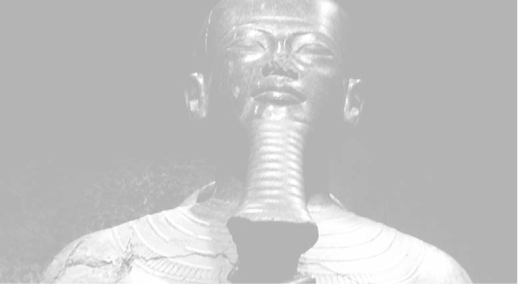By the fifth millennium B.C.E., the so-called Pre-Dynastic period of Egyptian history, people with tool-making ability, rudimentary shipping, crafts, and agricultural settlements lived along the Nile River. Much controversy surrounds studies of the ethnic makeup of these people. We know that at the end of this period Egypt was known as a country of “Two Lands.” Most scholars agree that the people of the north (Lower Egypt) developed from a culture known as the Merimde, with ties to the Eastern Mediterranean, while people in the south emerged from the Naqada and Badarian cultures with sources in Nubia and northeast Africa. At the beginning of the First Dynasty, about 3100 B.C.E., King Narmer or his son Aha joined the two lands, forming the world’s first great nation-state. Collectively known as Menes, it had a captial at Memphis, near present-day Cairo. After that Egypt underwent periods of great power and artistic achievement, as well as periods of division between the two lands. Egyptian history is generally divided into dynasties and intermediary time periods: the Old Kingdom (beginning c. 2780 B.C.E.) and the first Intermediate Period of disruption (beginning c. 2250 B.C.E.); the Middle Kingdom (beginning c. 2050 B.C.E.) and the second Intermediate Period, during which Egypt was overpowered by invaders known as the Hyksos; and the New Kingdom (beginning c. 1580 B.C.E.) and late periods culminating in the rule of the Greek Ptolemy pharaohs, the most famous of whom was Cleopatra. Roman rule, after the defeat of Marc Antony and Cleopatra, began in 30 B.C.E.


